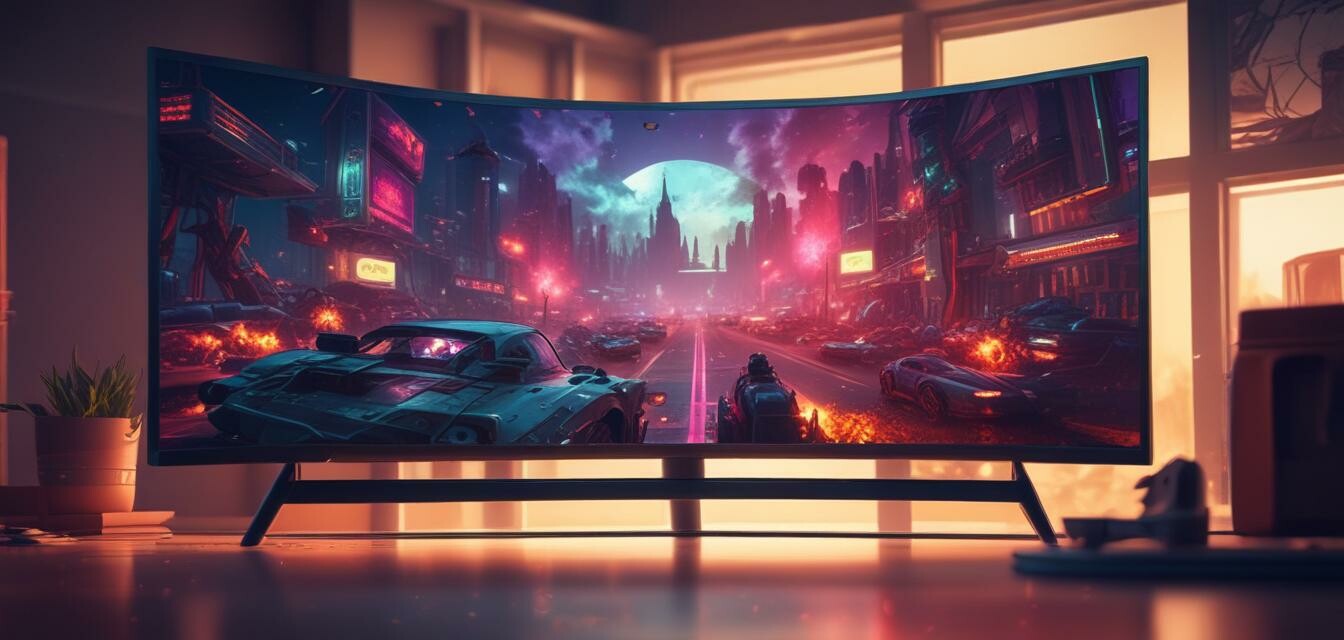
Brighter Displays: The Future of Gaming TVs
Key Takeaways
- Brighter displays enhance visibility and immersion in gaming.
- Technologies like HDR and OLED are driving the brightness trend.
- Increased brightness levels improve performance in various lighting conditions.
- Understanding key terms can help you choose the best gaming TV.
As the gaming industry evolves, so do the technologies that support it. One of the most exciting developments today is the shift towards brighter displays in gaming TVs. Enhanced brightness not only offers sharper images but also creates a more immersive gaming experience. In this article, we will explore the trend towards brighter displays, the technology behind it, and how it benefits gamers.
Understanding display brightness
Before diving into the specifics, let's break down what display brightness is and why it's important. Brightness is measured in nits, which indicates how much light a screen emits. Higher nit values mean brighter displays, allowing gamers to see finer details regardless of the ambient lighting in their gaming spaces.
Why brightness matters for gaming
Brightness plays a crucial role in gaming because it directly affects image clarity and detail portrayal. Here are several reasons why it matters:
- Improved visibility: High brightness levels lead to clearer images, especially in bright rooms.
- Enhanced HDR experience: High Dynamic Range (HDR) content requires significant brightness to showcase contrast effectively.
- Better gameplay: In competitive gaming, clearer visuals can lead to faster reaction times and improved performance.
Current trends in brighter displays
The evolution of display technology continues to push the boundaries of what's possible. Below are some current trends fueling the brightness revolution in gaming TVs:
| Trend | Description |
|---|---|
| OLED Technology | Offers superior brightness levels and better color accuracy compared to traditional LED screens. |
| Mini-LED | Utilizes smaller LEDs for backlighting, allowing for improved brightness and contrast control. |
| Improved HDR Standards | Higher standards for HDR content demand TVs that can reach higher nits for an optimal experience. |
| Variable Refresh Rate (VRR) | Allows TVs to synchronize with the gaming console, maintaining brightness and clarity even during fast movements. |
Enhancing the gaming experience
Brighter displays not only offer better visuals but also enhance the overall gaming experience. Here are some ways new technologies are elevating gameplay:
- Immersive environments: Bright displays contribute to better immersion in games, making colors pop and details stand out.
- Adaptability: As brightness levels improve, TVs can adapt to different lighting environments, ensuring a consistent experience.
- Future-proofing: Investing in a brighter gaming TV positions gamers to enjoy upcoming technology enhancements.
How to choose the right gaming TV with bright displays
When searching for the ideal gaming TV, consider the following factors:
Beginners' Section
- Look for TVs with at least 600 nits of brightness for HDR gaming.
- Research OLED and Mini-LED models for optimal brightness and viewing angles.
- Check for VRR support to reduce lag and improve responsiveness.
- Read reviews and comparison articles on 4K gaming TVs or HDR gaming TVs for in-depth insights.
Comparison: OLED vs. LED vs. Mini-LED
| Type | Brightness | Color Accuracy | Price Range |
|---|---|---|---|
| OLED | High | Excellent | $$$ |
| LED | Moderate | Good | $$ |
| Mini-LED | Very High | Very Good | $$$ |
Conclusion
The trend towards brighter displays in gaming TVs is reshaping the future of gaming. With improved visibility, enhanced colors, and cutting-edge technologies, gamers can now enjoy a more immersive experience than ever before. By understanding the importance of brightness and the latest trends, you're well on your way to choosing a TV that elevates your gaming experience to new heights. For more insights, consider exploring our news in gaming technology or buying guides for additional tips.
Pros
- Enhanced visibility in both bright and dark rooms
- Improved immersion with vibrant colors
- Better performance in competitive gaming
Cons
- Higher investment required for premium models
- Some technologies may not fit all gaming styles
